




Smooth Sailing



































Embarking on the open water is an exhilarating experience, flled with the promise of adventure and relaxation. Whether you’re a seasoned sailor or a weekend cruiser, protecting your vessel with proper insurance is not just a choice—it’s a necessity. Explore the reasons why every boat owner should prioritize boat insurance for a worry-free voyage.
The open water can be unpredictable, with unexpected storms, collisions, or other potential accidents. Boat insurance can give you fnancial protection if there is damage to your vessel, providing coverage for repairs or replacement.
Accidents on the water can result in damage to other boats, docks, or even injuries to passengers. Boat insurance offers liability coverage, which can pay for damages or injuries you’re liable for while boating, up to specifed limits, and lawsuit costs if you’re sued. This includes damage you cause to another watercraft or if someone on or near your boat is injured and you’re found to be legally responsible.
Unfortunately, boat theft and vandalism are realities that boat owners face. Boat insurance has comprehensive and collision coverage that can protect you against events outside of your control, including theft and vandalism.
Accidents on the water may lead to injuries for you or your passengers. Boat insurance offers a range of optional medical payments coverage limits, helping to cover medical expenses if you are in an accident or someone is hurt on your boat, regardless of fault.
If you fnanced the purchase of your boat, most lenders require insurance coverage to protect their investment. Having boat insurance not only fulflls these requirements but also gives you peace of mind knowing that your fnancial interests are safeguarded.


Some water municipalities and marinas may require proof of insurance for docking or accessing certain areas. Boat insurance allows you the fexibility to explore different destinations without worrying about entry restrictions.
Emergency towing and assistance
Progressive boat insurance can include optional Sign & Glide® On-Water Towing coverage. If your boat is disabled or breaks down on the water, Sign & Glide® pays for on-water towing, jump starts, soft un-groundings, and fuel delivery.
Wreckage removal
If your boat sinks, Progressive boat insurance will cover the cost of removing your boat from the water (if removal is legally required).
Investing in boat insurance is not just about protecting a valuable asset; it’s about safeguarding the memories, experiences, and joy that come with your on-water adventures. Don’t let unforeseen circumstances disrupt your journey—navigate with confdence, knowing that Progressive boat insurance has you covered. Ensure a smooth and worry-free voyage, because when it comes to your boat, peace of mind is the ultimate luxury.
Scan to get a quote in as little as 4 minutes
learn more.





















By Ben Martin, Editor in Chief
Fishing is a beloved pastime that transcends borders, drawing anglers to new destinations around the globe. Whether it’s the thrill of chasing trophy !sh, exploring pristine environments, or immersing oneself in local cultures, traveling to !sh o ers a unique and enriching experience. But why do so many anglers feel compelled to venture far from their home waters to cast a line? Here are some key reasons behind this phenomenon.
For many anglers, the chance to catch a once-in-a-lifetime !sh is a driving force behind their travels. Di erent regions are home to speci!c species that can’t be found elsewhere. For example, the tarpon-rich waters of the Florida Keys, the salmon runs in Alaska, or the giant trevally in the Seychelles all serve as magnets for anglers. e challenge of targeting these iconic species and the bragging rights that come with landing them o en justify the journey.

requires anglers to adapt and learn. Di erent locations come with unique !shing techniques, such as y !shing in Montana’s rivers, jigging for tuna in o shore waters, or using traditional handlines in tropical locales. Each trip is an opportunity to
friends and family or encounters with local guides and fellow anglers. ese interactions create lasting memories and a sense of camaraderie that extends beyond borders. In turn, the stories and photos from these adventures become cherished mementos, sparking conversations and inspiring others to pursue their own !shing journeys.
Magazine and its digital magazine Magazine have always tried to bring you news and awareness about exotic !shing destinations around the world. Your trips and adventures are an integral part of our monthly compilation process. Your photos, videos and stories about your !shing trips are always welcomed here.

acquire new skills, re!ne existing ones, and deepen one’s appreciation for the art and science of !shing.
Fishing in new destinations allows anglers to experience a variety of ecosystems, each with its unique beauty and challenges. From tranquil mountain streams and sprawling freshwater lakes to turquoise saltwater ats and deep ocean trenches, the diversity of !shing environments is staggering. is variety not only enhances the adventure but also broadens an angler’s understanding of aquatic habitats and their importance to global biodiversity.
Traveling to new !shing destinations o en
Fishing inherently fosters a deep connection with nature, but traveling ampli!es this experience. Anglers o en !nd themselves in remote, untouched locations where the tranquility and beauty of the natural world are at their peak. is immersion provides a welcome escape from the stresses of daily life and fosters a sense of mindfulness and gratitude.
Fishing trips o en bring people together, whether it’s through shared experiences with
For many anglers, !shing is more than a sport—it’s an adventure. Traveling to new destinations satis! human desire to explore the unknown and conquer its challenges. Whether it’s navigating unfamiliar waters, encountering unpredictable weather, or matching wits with elusive !sh, each trip is a thrilling chapter in an angler’s personal story. e reasons anglers travel to as diverse as the destinations they seek. From the pursuit of trophy catches to the joy of exploring new landscapes, each journey o ers a blend of excitement, education, and enrichment. For those who !sh, the world is not just a playground but a treasure trove of opportunities waiting to be discovered. So, pack your gear, book that trip, and embrace the adventure—the next big catch might be just a plane ride away.
To submit your catch photos, videos or stories, email editorial@coastalanglermagazine.com.
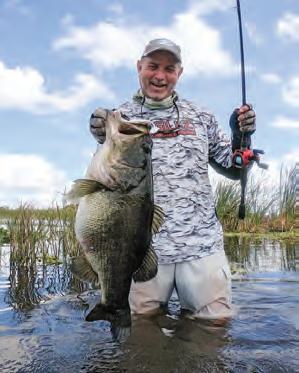





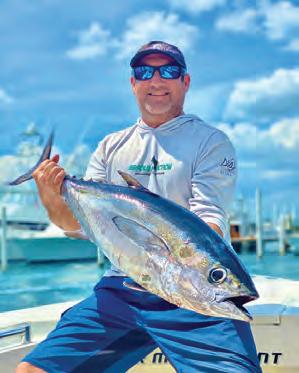



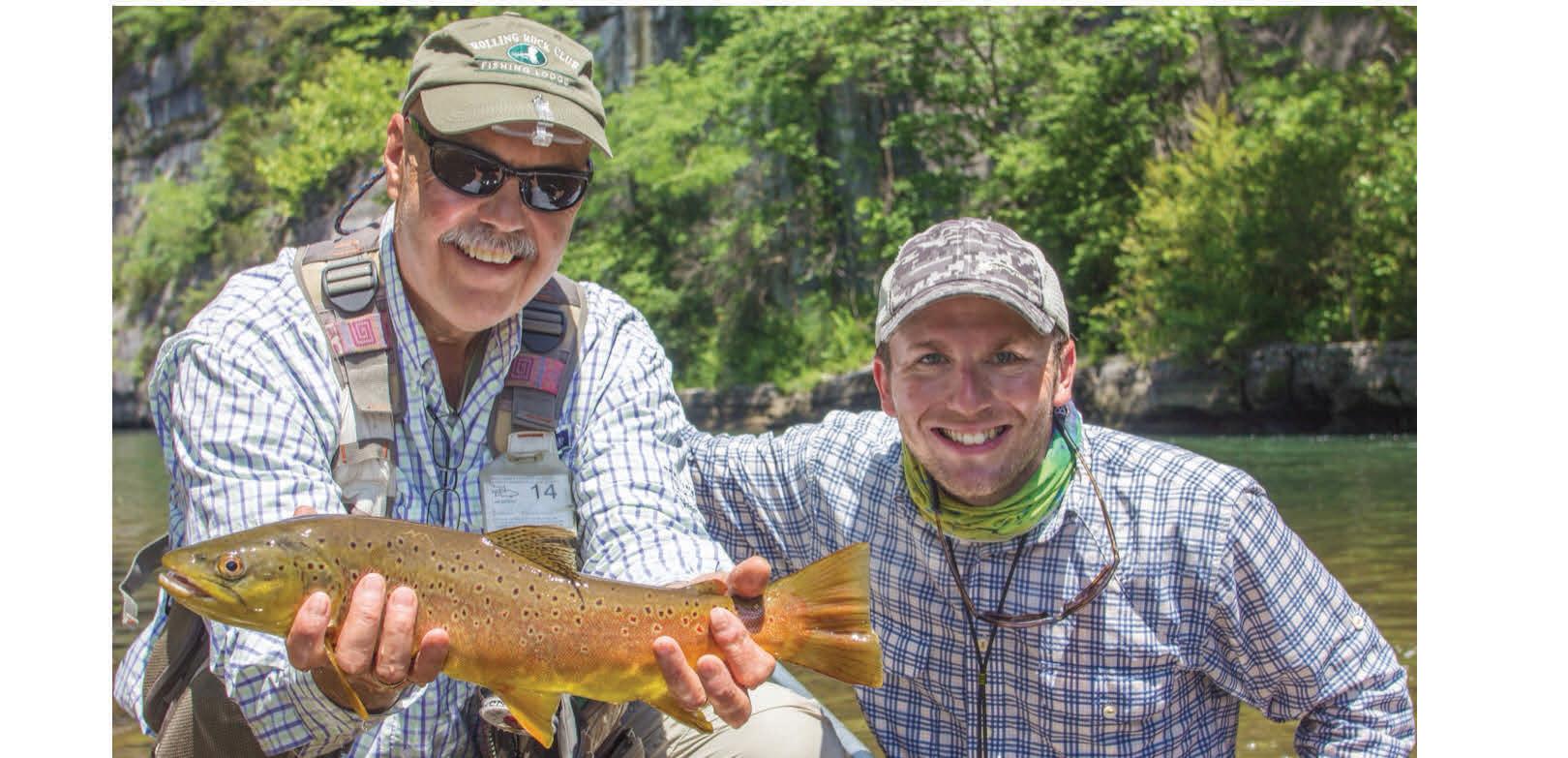





You want new charts?
You got new charts! Explore the ocean with vibrant terrain & depth shading, using all-new TZ MAPS. Don’t just take our word for it. See for yourself. Scan here, and we’ll show you!

What started as a morning of unproductive wahoo trolling north of St. Augustine turned into an unforgettable battle with one of Florida’s most prized catches. Capt. Daniel Levesque and his crew aboard Rare Breed had spent hours searching for wahoo, battling against an uncooperative west wind, when they decided to switch tactics.
“A er passing over endless schools of blue runners and proli!c bottom structure, I pulled into a spot that had previously produced wahoo,” recalls Capt. Daniel. “ e sonar was marking !sh from top to bottom.”
By Brandon Shoaf


As two anglers at the bow dropped sabiki rigs to collect live bait, their lines became hopelessly entangled. While the captain worked to untangle the mess of braided line, angler Mike Lorenz noticed something interesting on the sonar screen. He dropped down an old, paint-worn butter y jig to about 60 feet.
“It got hit by what felt like a train,” Lorenz describes. “ e conventional reel was screaming. At !rst, I thought I had a shark, but it felt di erent.” e mystery !sh made several blistering runs, nearly spooling Lorenz’s reel multiple times. e battle switched between long runs and deep, powerful dives under the boat. “It felt more like !ghting a huge grouper when it was beneath us,” says Lorenz. “I think both the !sh and I were taking breaks between rounds.”
Capt. Daniel maneuvered the boat to help chase down the !sh. A er an
9.9/15/20
These compact yet powerful engines have all the features you would expect to see on larger outboards, such as bettery-less EFI technology, multi-function tiller handle* and a large displacement porviding outstandng power. All while maintaining lightest in its class, quiet opetration and ease of portability.
intense !ght, a massive silver ash appeared near the surface, prompting the captain to shout “AP!” e prize—a massive African pompano—was !nally secured with a well-placed ga shot by Capt. Daniel. e crew gathered for photos, marveling at their spectacular trophy, a testament to both the !sh’s size and the memorable nature of the catch.
What began as a “cursed” day of wahoo !shing transformed into the catch of a lifetime, proving once again that sometimes the best !shing stories come when plans go sideways and anglers remain ready for whatever opportunity presents itself.
Brandon Shoaf is Co-Publisher of Coastal Angler Magazine’s Volusia County edition. Contact him at (386) 260-9600 or volusia@coastalanglermagazine.com.










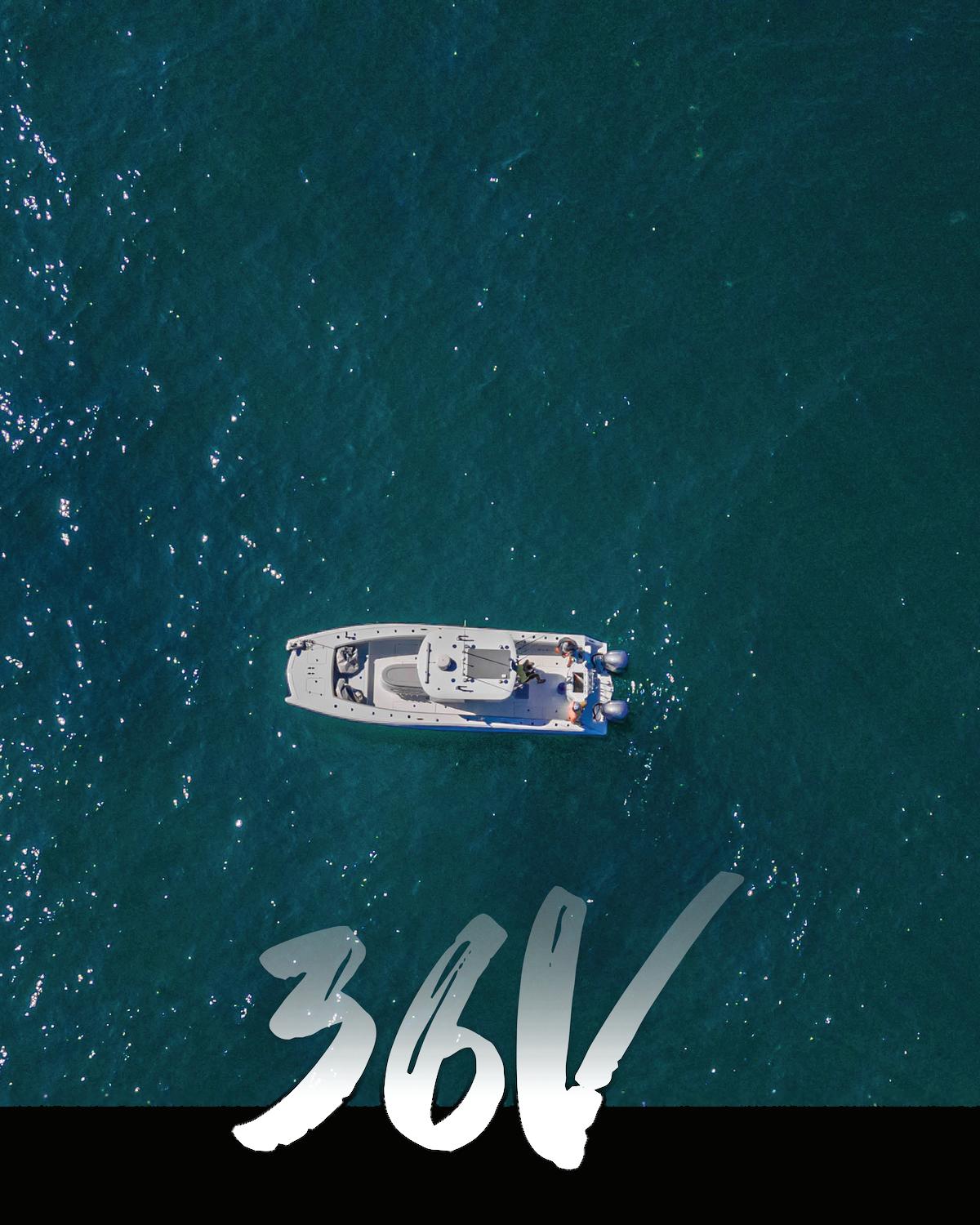









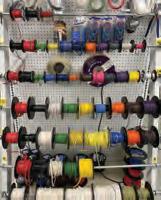



















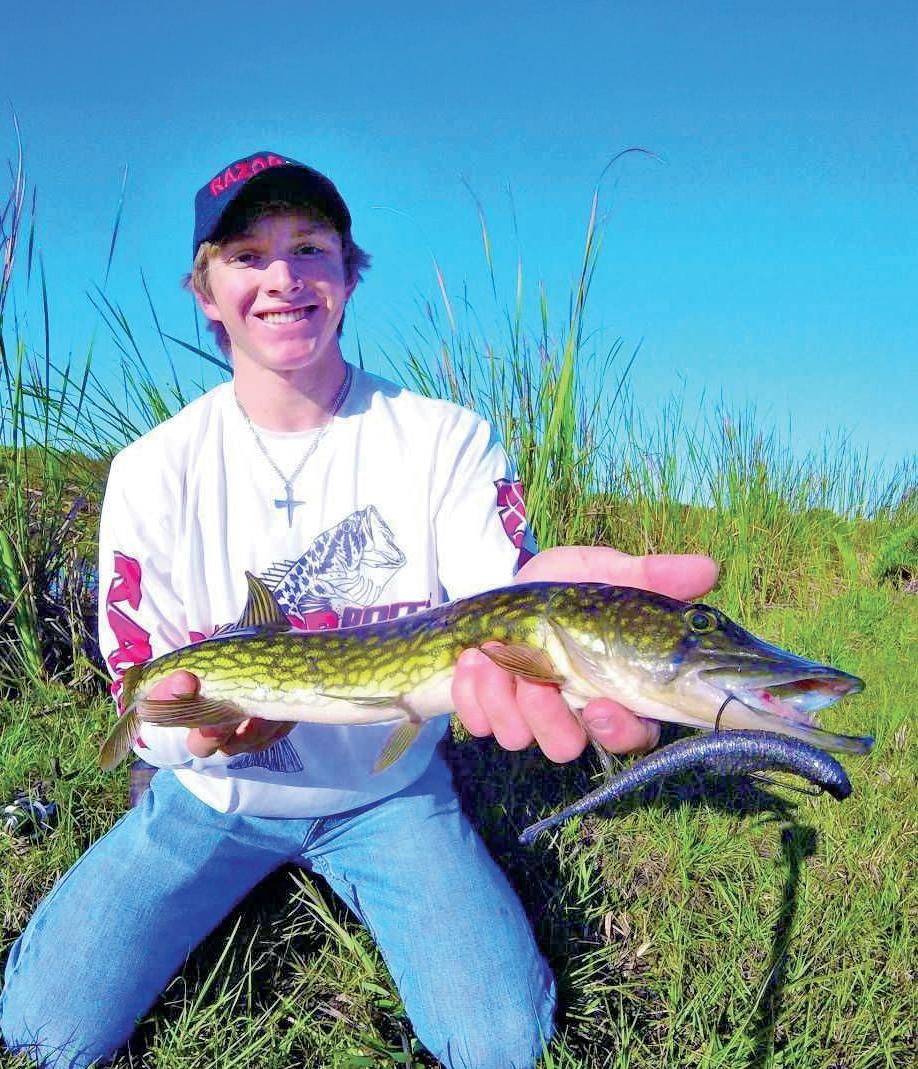
By Brandon Tourigny
In the northern parts of our great country, anglers enjoy chasing down enormous pike and elusive musky. We Floridians don’t usually give this toothy family of sh a second thought since the lake monsters of the north are nowhere to be found in our waters. ere is, however, a smaller cousin of northern pike and musky that Florida anglers willing to do a little searching can have the pleasure of shing for: the chain pickerel.
Named for their greenish and dark colorations creating a chainlike pattern, these sh stand out among the pike family. Alongside their smaller relative, the red n pickerel, these are the only pike family members commonly found in Florida.
Chain pickerel are found statewide and most o en inhabit densely vegetated areas of ponds, swamps and rivers. ese predatory sh are solitary hunters that prowl the shallows in search of small minnows and shad. e chain pickerel’s lightning-fast strikes and long snake-like body make for an exhilarating battle on lighter tackle. e best place to start in terms of selecting baits would be to go with small Rapala jerkbaits and crankbaits, topwater plugs and spinnerbaits. To be able to fully appreciate the ght in these feisty predators, a good rod and reel set up would be a medium-light action spinning rod paired with a 2,500 to 3,000 size spinning reel spooled up with 10- to 20-pound braided line. Don’t be surprised, however, if these toothy sh cut you o$ on occasion. eir mouths are full of needle-sharp teeth that can tear through shing line, and your ngers, very easily.
If you are looking to gain some recognition for your chain pickerel, be sure to check out the Florida Fish and Wildlife Conservation Commission’s big catch program, which gives wellearned recognition to large sh of a number of species caught in Florida. In terms of chain pickerel, any sh 3 pounds and heavier will qualify for this program. Also, as I always like to remind anglers across Florida, these sh are a native species to our state and deserve our respect when shing for them. Try to return sh unharmed to the water as quickly as possible to ensure your catch can continue to grow and carry on the population so our children a er us can have the chance to catch these magni cent sh.
Recommendations include $30 million to Restore Apalachicola’s Oyster Habitat, $10 Million for Shooting Sports Facilities, and $10 million for Artificial Reefs
Governor Ron DeSantis recently announced his 2025-26 Focus on Fiscal Responsibility Budget recommendations, solidifying Florida’s status as the nation’s leader in sh and wildlife conservation and outdoor recreation.
“Governor DeSantis’ recommendations reinforce his unwavering support to Florida’s sheries, hunting and angling community, public access to shooting sports, and the long-term recovery of the Apalachicola Oyster Habitat,” said FWC Executive Director Roger Young. “ ese investments are in addition to the Governor’s law enforcement pay plan, support of enhanced training capabilities for FWC O cers, and funding to bolster our operations to combat illegal immigration and drug tra cking.”
Florida is home to some of the country’s premier destinations for top-tier shing, hunting, and outdoor recreational opportunities. ese activities draw outdoor enthusiasts to our state and contribute signi cantly to the state’s economy with nearly $15 billion dollars. With more than 34 million acres of public and private land and over 12,000 square miles of water, maintaining our sh and wildlife resources is critical to sustaining a healthy way of life and a robust economy.
• Restoring Apalachicola Bay Oysters:
Historically, nearly 90% of Florida’s and 10% of the nation’s wild oysters came from Apalachicola Bay. is year, the Governor is recommending $30 million in funding to expedite FWC’s e$orts to restore and recover the oyster habitat. is investment is in addition to an additional $10 million investment in the Department of Environmental Protection’s budget to invest in projects that support the Apalachicola Bay Area of Critical State Concern.
• Promoting Floridians’ Access to Public Boat Ramps: As the Boating Capital of the World, Florida’s coastal communities must have enough publicly accessible boat ramps. As such, the budget recommends $9 million to increase public access to maritime facilities while providing another year of %exibility in the Department of Environmental Protection’s Working Waterfronts program.
• Investing in Florida’s Arti cial Reefs: e Focus on Fiscal Responsibility Budget provides $10 million to support additional reefs across Florida’s coastlines.
• Increasing Public Access to Shooting Sports and Wild Game: e Governor’s Budget invests $9.2 million to support the construction of two new shooting sports facilities in Liberty and Polk counties while also calling for a “Second
Amendment Summer” tax holiday on rearms and ammunition. Additionally, the budget provides $9 million to manage FWC’s wildlife management areas.
• Prioritizing Fresh and Saltwater Research and State Management: As recommended by the Governor, FWC is provided additional funds to support FWC’s marine lab in Cedar Key and increased funding to support the management of Red Snapper o$ all of Florida’s coastlines. e budget also prioritizes investments in Florida Bass, Snook, Tripletail, and other Bone sh species.
• Defending Florida’s Everglades from Invasive Species: Governor DeSantis includes more than $3 million to remove pythons from the Everglades utilizing traditional methods and innovative technologies.
• Maintaining Law & Order: e Governor provides $5 million for a dedicated state training facility for waterborne rescues and $4.4 million to codify the FWC’s Special Immigration Law Enforcement Unit.
FWC’s mission is to manage sh and wildlife resources for their long-term well-being and the bene t of the people. To learn more about FWC, visit MyFWC.com.



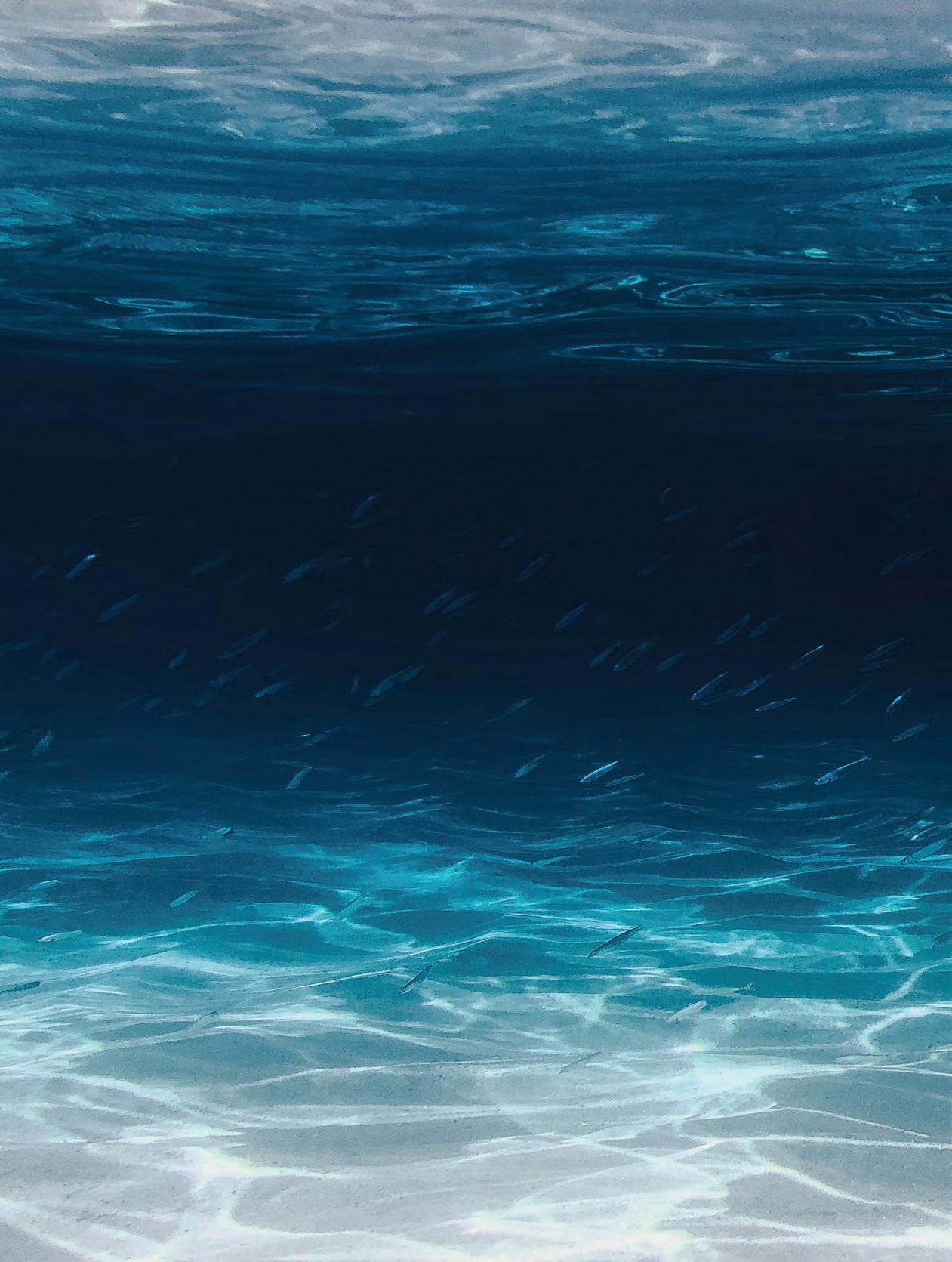






















efore I write this month’s forecast, I would like to take the time to thank the entire staff at Tampa General Hospital for taking me in and taking care of me during my darkest hour. These people literally cheat death with last minute miracles every single day. Chances are that you don’t know who these people are, so I’ll tell you who they are. These people are the real heroes of everyday life. I am personally very grateful for each and every one of them for their passion for life, and their dedication to a life of service for others. So that’s a mouthful to say about Tampa General Hospital and the employees that work there.
As for the forecast--- This month, expect Bass to move into the shallows to spawn around the full moon cycle with the largest Bass moving into the shallows during the full moon cycle in the month of April. A lot of this will depend on how fast water levels drop and how fast water temperatures rise. The magic water temperature is 65 degrees for pre-spawners and 68 to 78 degrees for spawners during the full moon cycle. With these numbers, I would be spending as much time as possible on the water. Frogs, Speed Worms, Senkos, and Flukes are your best bet. Target isolated patches of lily pads, Kissimmee grass and bulrushes. Often times, these areas on the Kissimmee will produce the largest Bass of the season. Shell Croaker and Blue Gill should also move in for a March spawn this year. Use crickets and red worms in and around the bulrushes and lily pads -- your best locations. This is my favorite season for long-time trolling for Crappie. White Road Runners 1/16 ounce, tipped with a minnow are first killers on Big Specs. Optimum trolling speed is about 1.0 to 1.2 mph.
For some great Catfishing, you would do well to work the pad lines of the Kissimmee River with minnows or small domestic shiners.
Best wishes for a great month of fishing! Until next time…..


March freshwater fishing trips will be rewarded with many different species like largemouth bass, sunshine bass (hybrid stripers), catfish, bluegill, shell cracker, crappie, shad, tilapia and mullet. A good way to tell when the weather changes signal a fishing season: orange blossoms will tell you bluegills are on. Go cat-fishing a day after the rain, and fish the moving water along a dropoff or in a deep river bend. Bass are usually active before and during the rain.
Largemouth bass will be halfway or more into their spawn. Use baits that imitate critters who steal their eggs - salamanders, craw fish, bluegills, and shiners. Try a Rattle Trap type lure in a fan cast pattern to find fish. The bass will be bedding all along the shores of the lakes in 1-3 feet of water. Another great bait in March is a Carolina rigged soft plastic worm or lizard. (Carolina Rig: pin a quarter ounce weight 15-18 inches above the worm – so the weight goes thru the grass and the worm is still exposed)
Panfish time is here! Bluegill and shell cracker begin their spawn this month. Find bedding areas and catch fish. Look along the banks of the river not necessarily in the bends. Sandy bottom or shell bottom should produce. Red worms and/or crickets on a #4 hook and a spit shot is all you need.
Crappie and shad are at the end of their spawning run. Best bet for crappie is to jig fish structure in the river. If you’re going to try full moon fishing in the lakes, March may be your last shot. Tilapias are being taken with bows and arrows and gigs along the shores of Lake Jessup in skinny water. Mullets are beginning to show along the seawall in downtown Sanford.













March is usually a windy month. Red fishing will get better and better in the Indian River and Mosquito Lagoon. The last two months have been phenomenal for sight fishing. We hope in March that the water comes up. Most of the redfish have been in big schools and should remain that way throughout March. When coming up on a big school of fish tie on a 1/8 oz jig head with a Wyze Guyz pearl white paddle tail, live shrimp or Gulp shrimp works well too. You can use Little John’s Mirrolure in a glo color tied to 20# mono leader. Most of the schools are out in the open on the drop off or on the edge of a flat. They cannot cut you off on any debris on the open flat. The seatrout has been good this year. Try fishing for them around schools of baitfish like mullet, on drop offs and sandy holes in the flats. Seatrouts also like dirty water. For trout use weedless jerk baits and if no grass, use a jig head with a Wyze Guyz paddle tail, live shrimp or finger mullet.
The black drums are still in schools, usually by drop-offs or on edges. I use a piece of shrimp on a 1/8 oz jig head or freeline live shrimp to catch smaller black drum. To catch the larger ones, they are usually at the causeways or bridges, and I use a heavier jig head with a piece of blue crab. Side scan works the best for fishing black drum around structure. Grass has come back in the lagoon which should bring more fish to the area.
March is always good in the ocean (nearshore) if you can get out there. Look for tripletail on the buoys, free swimming or weed lines. This is also the time of the year when the rays come along the shoreline, Cobia typically follows them. For Cobia, I throw a 1 ½ oz Cobia Buster with a 40# mono leader on 20-30# braid. For tripletail free swimmers, I use a 3/0 hook with 30# mono tied to 10-15# braid. For fishing tripletail on the buoys, I use 40# leader with a 3/0 or 4/0 hook tied to 30 # braid with a small split shot.


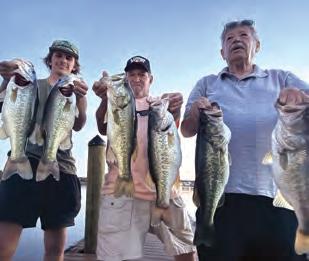
The spawn is in full swing in Florida. The bass fishing is really kicking off and they are chewing, making this time of year some of the best months for an angler to go out and target a trophy bass.
After lots of cold weather and fronts, there is finally some warmer weather coming in with the lows around 60 degrees and the highs being around 80 degrees. This is causing the bass to get fired up and ready to spawn. With rising water temp’s, anglers this month will see a mix of pre-spawners starting to stage up, along with many spawners on beds, and post-spawners ready to feed back up after doing their business.
Some of the best areas to look in for pre-spawners and post-spawners is offshore grass and vegetation. Common spawning areas are brush piles, pinch points and transitions to where these fish can set up before they move up to spawn. To find spawning bass, look in protected northern banks, canals


While the rest of the United States are still scraping ice and wearing jackets, Floridians are entrenched in “no man’s land,” as far as, weather is concerned. There will be chilly mornings and warm afternoons this week and another cold front next week dropping temperatures back down into the 50’s. This time of year can be difficult for anglers to really dial in any kind of pattern or consistency, as far as, what is biting and where.
The best advice I can give you is to be versatile. Have a plan the night before based on the weather but, also, prepare a backup plan. When the water is chilly (70 degrees or less) shrimp and fiddler crabs are a great bet for backcountry or dock fishing for sheepshead, redfish and black drum. However, when the water temp ticks up a bit, you may notice that the sheeps haven’t left your favorite spot just yet, but they can be really finicky. Generally, when I have planned a shrimp and fiddler kind of day and the bite is just off, I can adjust fire fairly easily and fish for redfish or trout that are on the flat. Redfish that aren’t stacked up in the canals or deep water should be out patrolling the flats and oyster beds and would jump at your generous offering of an easy-to-eat cut bait. Trout that aren’t in the back feeding on shrimp love to eat a swimbait and, usually, aren’t too picky.

and creeks with hard bottoms. If the water is a little dirtier, flipping cattail reeds, lily pads, arrowheads and anything shallow with hard bottom around it will be a big player.

To target the pre- and post-spawners, my main choices of artificial baits are lipless crankbaits in any of the vegetation with a constant reel. The key to getting a lot more bites is changing up the cadence in your retrieval. I will also throw jerk baits around the structure. A chatter bait, Neko rig, Texas rigged worm, crankbait or jig head minnow all work well.
To target spawning fish, if I am sight-fishing, I keep it very simple. I use a 3.8 kietec swimbait with a ½ oz flipping weight Texas rigged, and I will have a 5-inch Senko with a ¼ oz flipping weight. If I am blind-fishing spawners, a topwater prop bait with warmer water temps is always a player. You can also use a Texas rig, a wacky rig or a flipping set up.
In my recent trips, I have had amazing numbers along with quality and many trophy catches at the Harris chain. Bass fishing has been unreal with many great guided trips. Now is the time to get out there!
CLAYBURN REED
To book a trip or for more information call me at T: 352-279-1307 or message me on instagram@clayburn_reed_fishing



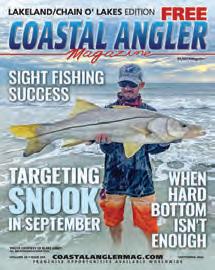


In my region specifically, the Anclote Power Plant offers a great hunting ground for a wide variety of fish that are dealing with the same “no man’s land” water temp fluctuation. Fishing a shrimp in the runoff area can produce trout, pompano, permit, redfish, snook, tarpon and even some wandering cobia this time of year. It is a great place to go by land or sea when the water temperature is just a bit too warm for sheeps and a bit too cold still to fire up the snook.
Speaking of snook, some of the best snook fishing you can do on the Gulf Coast happens when that water temperature hits the high 70’s after months of it being cold. Be versatile, and stay ready for whatever mother nature throws your way this time of year!
CAPT. BILL RUTHERFORD
Captain Bill is a Florida native who grew up fishing the Gulf Coast. Being a proud Army Vet himself, he founded a charity called VetCatch that takes disabled veterans on cost free fishing trips in the Tampa Bay area. He guides out of New Port Richey fishing a Bulls Bay tower boat as well as the custom 25-foot VetCatch pontoon if needed for elderly/disabled fisherman.





March Madness is here - bring on the cobia! This is the historic time frame along the central east coast of Florida that the migration of cobia swims by. Although anglers catch them all year long, this is usually the best time. The water is warming back up to the 70-degree mark.
Free-swimming cobia are the most fun to target, a few things must come together though. One being sunny skies, you must be able to see into the water a little bit and two, try to get as high as possible.
Hungry cobia are not picky fish nor are they the smartest. The bait of choice is a buck tail with a whole squid hooked on it. This gives a natural look and smell.
It’s fun to watch a cobia go nuts trying to eat a live bait. Sometimes there are days that you will see 30 fish and maybe only 2 will eat or get ‘Fired up’ on a jig. Not many cobias turn down a live fish. ...fishing is just what it says, fishing
There are many different types of baits and lures people use. Even the steel (spoons) works well at times when they are debating what to eat swimming near the boat.
Sometimes, live bait matters. Bunker (also called pogies or menhaden shad) and pinfish work great.


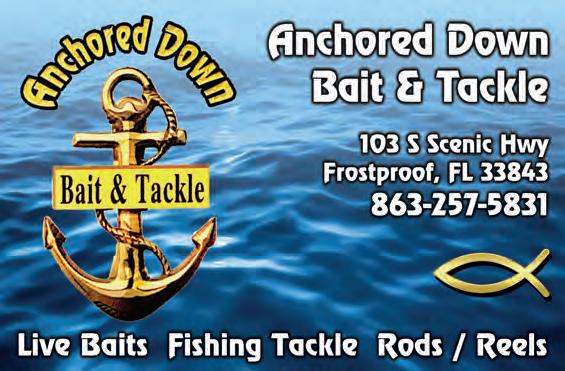
It’s fun to watch a cobia go nuts trying to eat a live bait. Sometimes there are days that you will see 30 fish and maybe only 2 will eat or get ‘Fired Up’ on a jig. Not many cobias turn down a live fish. Some say they will never turn down a live choice shrimp or their magic swim bait etc. Fishing is just what it says, fishing.
The gear of choice is a 7-foot medium action rod with a light tip to allow jigging the lure, and enough backbone to stick the hook. Line is 40lb braid and a 50lb mono leader. When using live bait, try an 8/0 circle hook and hook the live fish through the back of the head. Cast forward and past the fish.
For jigs – you cannot reel faster than a baitfish swims. Do not let the jig go down, or the cobia may never come back up.
Don’t forget to register at Sunrise Marina for the month-long Cobia Madness tournament. Good luck!
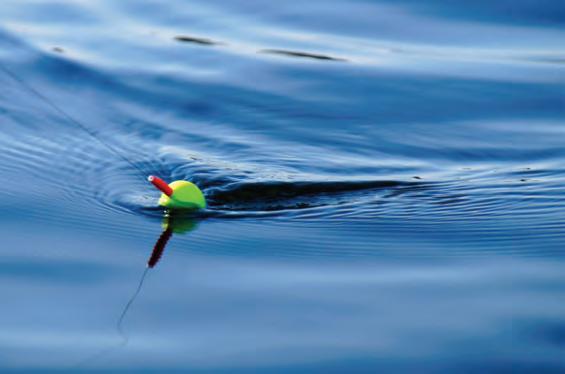
Lake Okeechobee has been great for bass and crappie fishing, and the bream are heading into the shallows to start their annual spawn season, which typically lasts through the summer months. This is also a great time to fish for bass, throwing lures in/around bluegill beds with swim baits, top water, frogs, swim jigs, and worms.
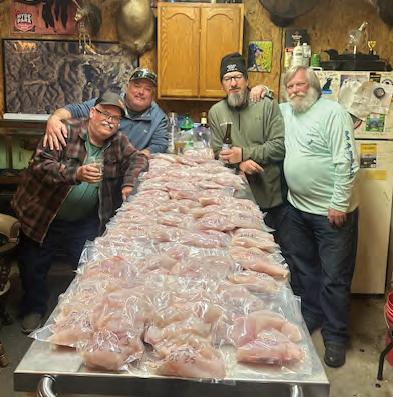
May is a great time to fish the lake with less boat traffic, steady weather temps, cold fronts over, and not into the hot summer temps yet, and it is peaceful. Want to book a trip but never booked with a guide before?
Here are some typical questions people ask when we discuss their trip. As the guide, do I provide all tackle needed, whether we fish for bass, crappie, or bream? The answer is yes; I provide top-of-theline tackle and gear. Does the customer pay for the live bait for a bass trip?

Yes, the customer is responsible for all live bait costs. Is it possible to fish for several different species in one trip, such as live bait for bass and then jig for crappie? Yes, it can be done, but I have found that through my 20+ years of guiding, a full day of fishing is best; anything less, you’ll feel rushed. Do I offer a fish cleaning service? Yes, I will clean and bag your catch for a fee. Do I offer any discounts? Yes, I offer Veteran and one-person discounts. Do I work with a local hotel that offers my customers a discount? My customers can receive a deep discount with a top hotel in Okeechobee.
The areas on the lake that have been producing both bass and crappie, starting on the north end, are parts of Kings Bar, Buckhead Ridge area, Tin House, and Indian Praire, and down towards Dyess Ditch. On the west end, there are parts in the Monkey box, the north/west side of Dupree Bar, some areas on the Shoal, and down to the blue hole area. Lures for bass are worms, swim baits, flipping/pitching, flukes, spinnerbaits (windier days), shallow crankbaits along grass edges/pockets, and some top water. Staple colors are: Junebug, red shad, white, tilapia and bluegill patterns, green-pumpkin/purple flake.
I hope this information helps you have a better, productive day fishing on the big O. To book a fun-filled, productive day on the water, call me at 863-228-7263. Check out my website for more information at www. southfloridabassfishing.com. Thank you to my Sponsors: Mercury, Toho Marine, Bullet Weights, Gill, BnM Poles, Real Magic, Navionics, Rapala, Lews, G-Loomis, Gene Larew, and Pradco Brands.





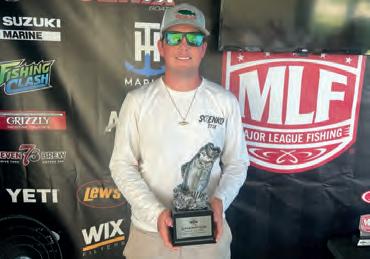
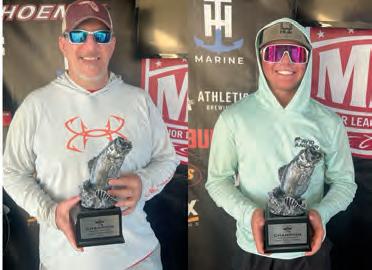
Valachovic and Hunter Tie for Win in Strike King Co-Angler Division
Fishing in his first career tournament in MLF competition, 19-year-old boater
Tanner Seabolt of Okeechobee, Florida, caught a five-bass limit weighing 31 pounds, 9 ounces, Saturday to win the MLF Phoenix Bass Fishing League (BFL) Presented by T-H Marine on Lake Okeechobee . The tournament was the first event of the season for the BFL Gator Division.
Seabolt earned $4,507 for his victory.
Seabolt, who works at Fast Break Bait & Tackle up on Okeechobee’s north end, is able to stay pretty dialed in on what’s happening at his home lake.
“I found a spot up there on the north end – cattails with some bedded fish around them,” he said. “I was just throwing a worm at them. It was pretty consistent all day. I had my bag by around 12:30ish and then just kept on throwing a bigger worm for a big one.
“I found these fish two weeks ago. I didn’t really catch anything great off it, but I caught some solid fish. I guess they pulled in there either last night or today.”
After 12:30, Seabolt made one nice cull, tossing back a 4-pounder for a 5 1/2. His biggest fish weighed 8 pounds, 12 ounces.
What’s wild about the spot where Seabolt caught his fish is that, according to Seabolt, another local tournament was also won there on Saturday, and it took 30-plus to win that one, too.
Seabolt spent the tournament working down one key stretch, pitching a Gambler Ace in black and blue on a 7-foot, 2-inch Scenko Stix custom rod. Seabolt wasn’t sight-fishing, but he was fishing his Texas rig slowly, knowing that the fish were setting up on beds. Most of his bass came in little clusters.
For Seabolt, this is win No. 1 with Major League Fishing.
“I went into this tournament thinking that if they were there I could catch them really good,” he said. “So I just went into the tournament praying. Honestly, it (winning this event) means everything to me.”
The top 10 boaters finished the tournament:
1st: Tanner Seabolt, Okeechobee, Fla., five bass, 31-9, $4,507
2nd: Dylan Quilatan, Windermere, Fla., five bass, 24-15, $2,253
3rd: Roger Gonzalez, Coco, Fla., five bass, 24-5, $1,502
4th: Finn Taylor, Lake Placid, Fla., five bass, 23-15, $1,052
5th: Casey Warren, Myrtle Beach, S.C., five bass, 23-11, $901
6th: Fred Chivington Jr., San Mateo, Fla., five bass, 21-2, $826
7th: Richard Newberry, Pinellas Park, Fla., five bass, 20-14, $1,251
8th: Brandon St. Pierre, Lehigh Acres, Fla., five bass, 19-10, $638
8th: Ben Harris, Haines City, Fla., five bass, 19-10, $1,293
10th: Eric Morgan, Royal Palm Beach, Fla., five bass, 18-5, $526
Ben Harris of Haines City, Florida, caught a bass that weighed 10 pounds, 4 ounces, and earned the Berkley Big Bass Boater award of $655.
Anthony Valachovic of Coral Springs, Florida, and Evrett Hunter of Nokomis, Florida, tied for the win in the Strike King co-angler division Saturday, after each bringing three bass to the scale that totaled 16 pounds, 2 ounces. Valachovic earned $2,017, including the $327 Berkley Big Bass co-angler award, which he received for catching the biggest fish of the day in the co-angler division – a 10-pound, 5-ounce bass. Hunter earned $1,690 for his share of the victory money.
The top 10 Strike King co-anglers finished:
1st: Anthony Valachovic, Coral Springs, Fla., three bass, 16-2, $2,017
1st: Evrett Hunter, Nokomis, Fla., three bass, 16-2, $1,690
3rd: Chuck Crow, Windermere, Fla., three bass, 14-5, $638
3rd: Shannon Pike, Sarasota, Fla., three bass, 14-5, $638
5th: David Lane, Orlando, Fla., three bass, 13-14, $451
6th: Dean Bligh, Heddon Heights, N.J., three bass, 12-14, $413
7th: Michael Ryan, Mount Dora, Fla., three bass, 11-7, $376
8th: Tyler Nekolny, Coral Springs, Fla., three bass, 10-10, $319
8th: Jeremy Bouldin, Kings Mountan, N.C., three bass, 10-10, $319
10th: Scott Hopping, Port Saint Lucie, Fla., three bass, 10-8, $263
In addition to earning the win, Tanner Seabolt of Okeechobee, Florida, has the early lead in the Fishing Clash Gator Division Angler of the Year (AOY) race with 250 points, while Anthony Valachovic of Coral Springs, Florida, and Evrett Hunter of Nokomis, Florida, are tied for the lead in the Fishing Clash Gator Division Co-Angler of the Year race with 250 points apiece.
The next event for BFL Gator Division anglers will be held March 8, at Lake Toho out of Kissimmee, Florida. To register for the event as a boater or a co-angler, visit MajorLeagueFishing.com or call (270)-252-1000.
The top 60 boaters and co-anglers in the division based on point standings, along with the five tournament winners of each qualifying event, will qualify for the Oct. 17-18 BFL Regional tournament on Lake Seminole in Bainbridge, Georgia. Boaters will fish for a top award of a new Phoenix 819 Pro with a 200-horsepower Mercury or Suzuki outboard worth $50,000, while co-anglers will compete for a top award of $20,000.
The 2025 Phoenix BFL Presented by T-H Marine is a 24-division circuit devoted to weekend anglers, with 134 events throughout the season, five qualifying tournaments in each division. The top 60 boaters and Strike King coanglers from each division, along with the five qualifying tournament winners, will advance to one of 12 BFL Regional tournaments where they are competing to finish in the top three, which then qualifies them for one of the longest-running championships in all of competitive bass fishing – the BFL All-American. The 2025 BFL All-American will take place May 29-31, 2025, at Lake Hamilton in Hot Springs, Arkansas, and is hosted by hosted by Visit Hot Springs and the Arkansas Department of Parks and Tourism.
Proud sponsors of the 2025 MLF Phoenix Bass Fishing League Presented by T-H Marine include: 7Brew, Abu Garcia, Athletic Brewing, B&W Trailer Hitches, Berkley, BUBBA, Deep Dive App, E3 Sports Apparel, Epic Baits, Fishing Clash, Grizzly, Humminbird, Lew’s, Li Time Batteries, Mercury, Minn Kota, Mossy Oak, Mystik Lubricants, Onyx, O’Reilly Auto Parts, Phoenix Boats, Polaris, Power-Pole, Precision Sonar, Strike King, Suzuki Marine, Tackle Warehouse, T-H Marine, Toyota, Vosker, WIX Filters and YETI.
For complete details and updated tournament information, visit MajorLeagueFishing.com. For regular Bass Fishing League updates, photos, tournament news and more, follow MLF5’s social media outlets at Facebook, Instagram, and YouTube.







ShoreStation hydraulic boat lifts are a reliable choice for coastal residents and boating enthusiasts alike. Their strong construction, made with corrosion-resistant materials, allows them to withstand harsh environmental conditions, including sun, storms, and saltwater damage. ShoreStation provides a steadfast solution for protecting waterfront investments, o ering peace of mind to owners in the Sunshine State.
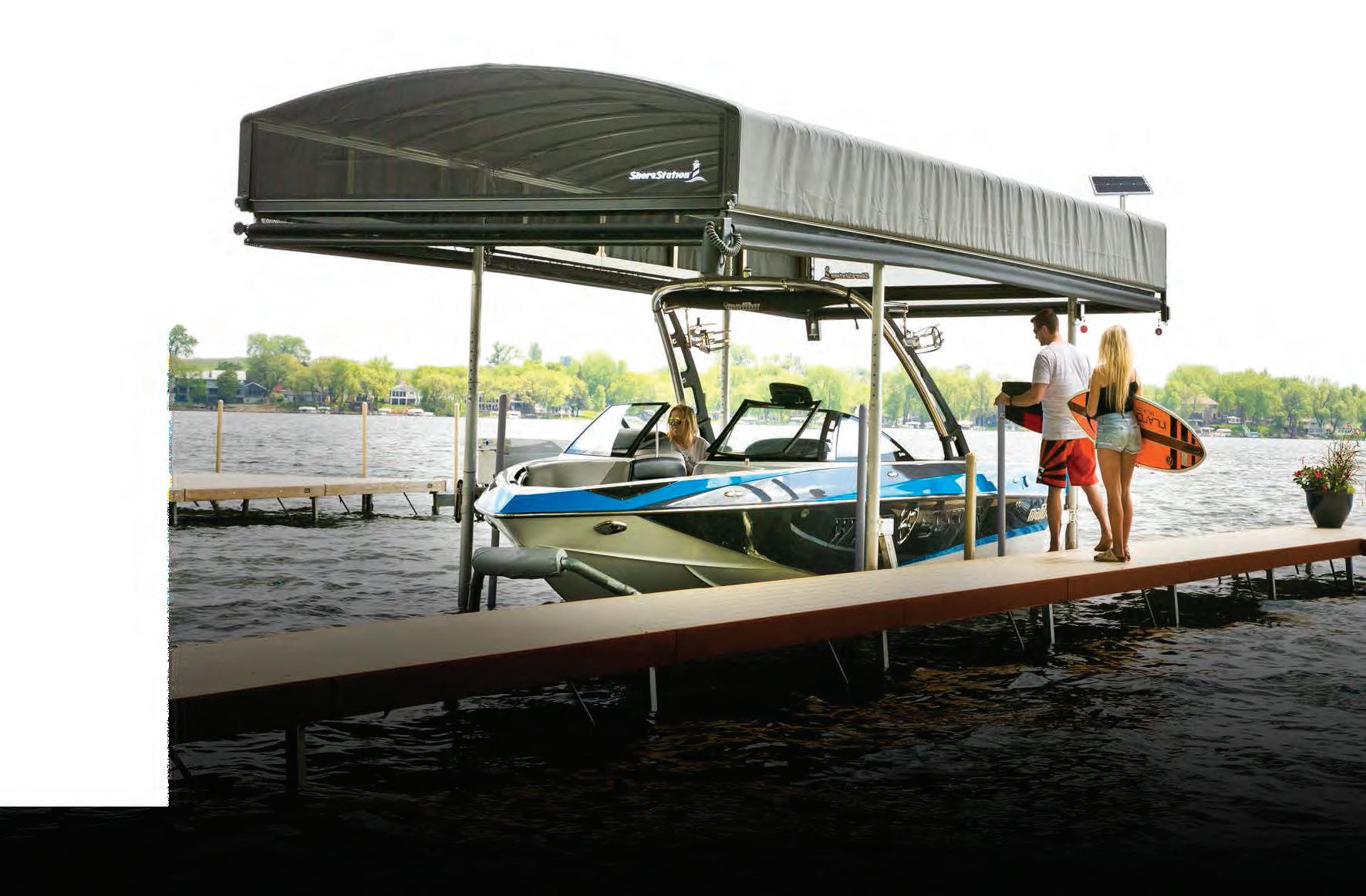







Equipped with exceptional weather resistant fabric and breathable SunTex 80 woven mesh ends for maximum protection and durability, the REVOLUTION™ Series Canopy is the most innovative canopy

Made from the highest quality materials, our innovative hydraulic boat lift is one of the fastest and safest lifts on the market today. When you have a hydraulic lift, there’s no need to worry about wind and waves getting in your way. This lift will give you con dence to safely land and secure your boat in less-than-ideal conditions.
Never miss another moment on the water. Power your lift with clean, free solar power. Our speedy 20 watt charger features solar regulator drainage protection, saving your battery from permanent damage caused by overcharging.



By Capt. Michael Okruhlik

Spring shing brings its own set of challenges and opportunities. As water temperatures rise, targeting inshore species like trout, ounder, and reds requires adapting to their changing behavior. Early spring o en means downsizing lures. As sh feed on tiny bait sh and shrimp, small lures mimic these natural prey more e$ectively. Large trout and reds may already have full stomachs, expelling small bait when caught, signaling the need for a smaller o$ering to match the size of the food they’re consuming.
With the warming water, sh become more aggressive, and it’s time to speed up your retrieval techniques. A er a slower winter, anglers should bring out faster-action rods and smaller versions of topwater and twitch baits. While spring can bring calm days, cool fronts and high-pressure systems still a$ect sh behavior. When this happens, adjusting to the conditions—rather than just relying on the calendar—is key. Opting for colors like white or silver for hard baits can pay o$ during this time.
However, spring also brings sti$ winds and crowds. In South Texas, gusts can reach up to 30 knots, making conditions challenging, especially

for kayakers. It’s crucial to check the forecast and plan for these challenging winds. Additionally, spring break brings an in ux of boaters and kayakers, many of whom may be rusty from the o$season. Defensive driving and boating have become essential, and leaving early is recommended to avoid congestion at ramps and on the roads.
Conditions are still variable when targeting sh in March. %e water can remain chilly despite warmer air temperatures. Cold fronts a$ect sh behavior, making them seek deeper water with more stable temperatures. While some sh may move closer to ats as the day warms, they rarely stray far from deep water. Focus on areas near the outer edges of guts that lead from deeper water to ats, adjusting as the day progresses.
During high-pressure conditions, downsizing lures remains reliable, especially as young forage species become abundant. Natural or translucent
colors work well; slowing the retrieval to keep lures closer to the bottom can increase success. When this approach doesn’t yield results, switching tactics can help. Using noisy lures, such as rattling crankbaits or loud topwaters, can provoke a reaction bite when sh are less willing to chase actively. Experimenting with these extremes—quiet, slow presentations versus noisy, aggressive ones—can help you nd the right approach in high-pressure situations. Spring shing requires patience, adaptability, and a keen eye for weather and water conditions. Whether you’re dealing with shi ing sh patterns or navigating spring break crowds, it’s a great time to get out on the water—and maybe bring a kid along for the adventure.
Capt. Michael Okruhlik is the inventor of Knockin Tail Lures®, and the owner of www.MyCoastOutdoors.com.


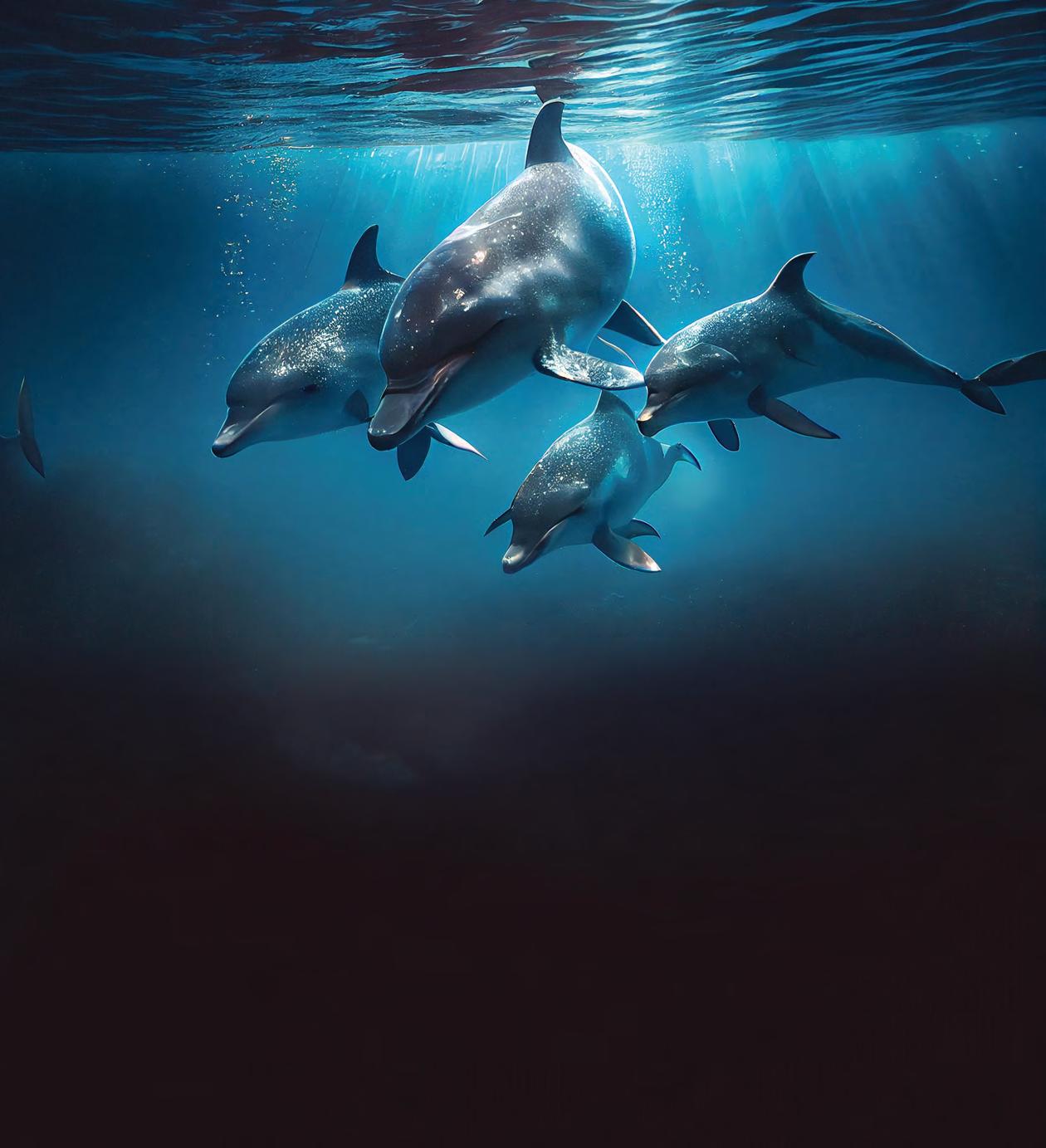
I’ve been incredibly blessed to !sh with some of the best anglers on the planet, guiding me through my journey. To complete that journey, I always keep a couple of rods in my truck, ready to !sh farm ponds, lakes, and rivers during my travels as a Boat Li US salesman. It brings me back to my roots.
Last month marked my 64th birthday, and I !nd myself enjoying the simple !shing of my youth more and more. Don’t get me wrong—I still love a gag grouper or wahoo bite like Peter loved our Lord—but I also love catching whatever is in season. March can be a slow month for nearshore and o shore !shing, making it the perfect time to switch focus to hickory and white (American) shad in our rivers.
Tim Barefoot

their birth. eir migration mirrors that of Paci!c salmon, using an innate
learning their seasons over the years. Hickory shad arrive !rst—smaller but plentiful—making them perfect for introducing kids to !shing with non-stop action. When the larger white shad show up, it’s game on. ese !sh pull hard in the cold water, !ghting until the moment you unhook them.
I strongly recommend mashing down the barbs on your hooks to make dehooking easier. Let’s be honest—most anglers aren’t eating shad, so reducing injury before release just makes sense. Also, always wear eye protection when !shing for these powerful !sh. A jig popping free near the boat can come ying back at the angler, as my son learned the hard way in a recent trip to the James River.

ese !sh are truly amazing. ey leave the coastal rivers of the eastern U.S., migrate to Nova Scotia, take a hard right into deep waters, then journey back south to spawn in the rivers of
GPS to !nd their way home. ey travel in vast schools, surviving intense predation, just to return to their spawning grounds.
Knowing this, I position myself to take full advantage of this mass migration. I !sh for shad in Virginia, North Carolina, and South Carolina,
White shad will be in rivers all the way down to Florida this month, so if you’re looking for a fun !ght on light tackle, now is the time. Check out my YouTube channel for the tackle and techniques I use to catch these childhood favorites. And, as always, take plenty of videos of your kids—they’ll cherish those memories later in life.
For more from Tim Barefoot, visit barefootcatsandtackle.com and check out his YouTube channel.

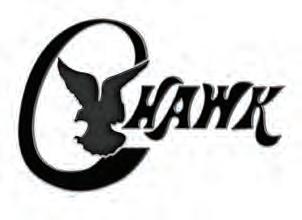










May 9th & 10th, 2025
Online Registration: MothersDayDolphinTournament.com
Captain’s Meeting
Liechty Marine
Friday May 9th - 6pm to 7pm
Lines In: Saturday, May 10 - 7:30am
Lines Out: Saturday, May 10 - 3:30pm
Weigh-In
Curly’s Co ee
Saturday, May 10th - 3:30pm to 6pm
Awards Banquet
Marathon Yacht Club
Saturday, May 10th - 7pm
Sunday Honor

















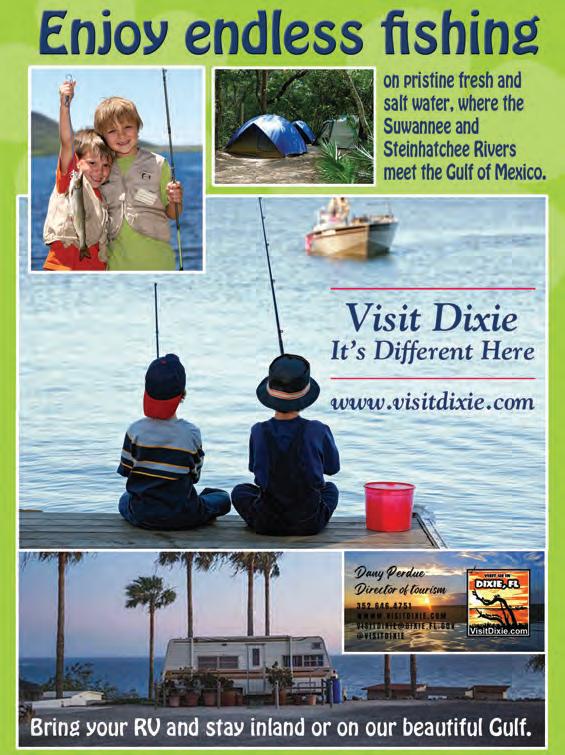
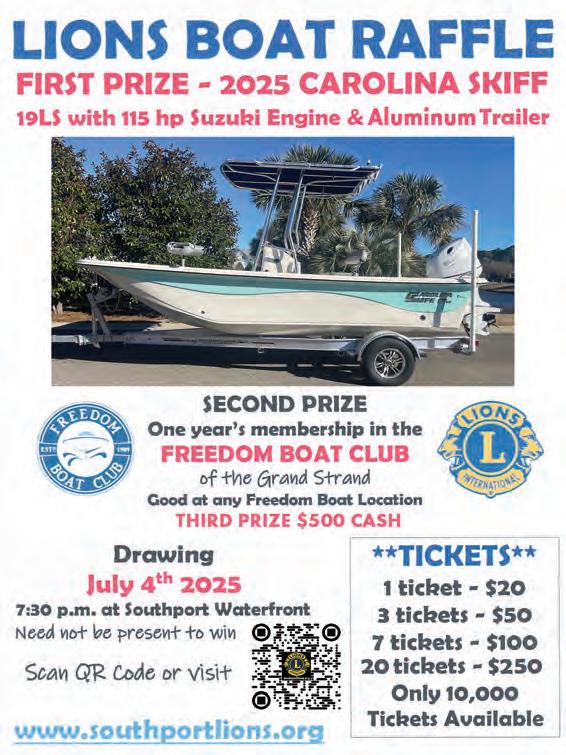

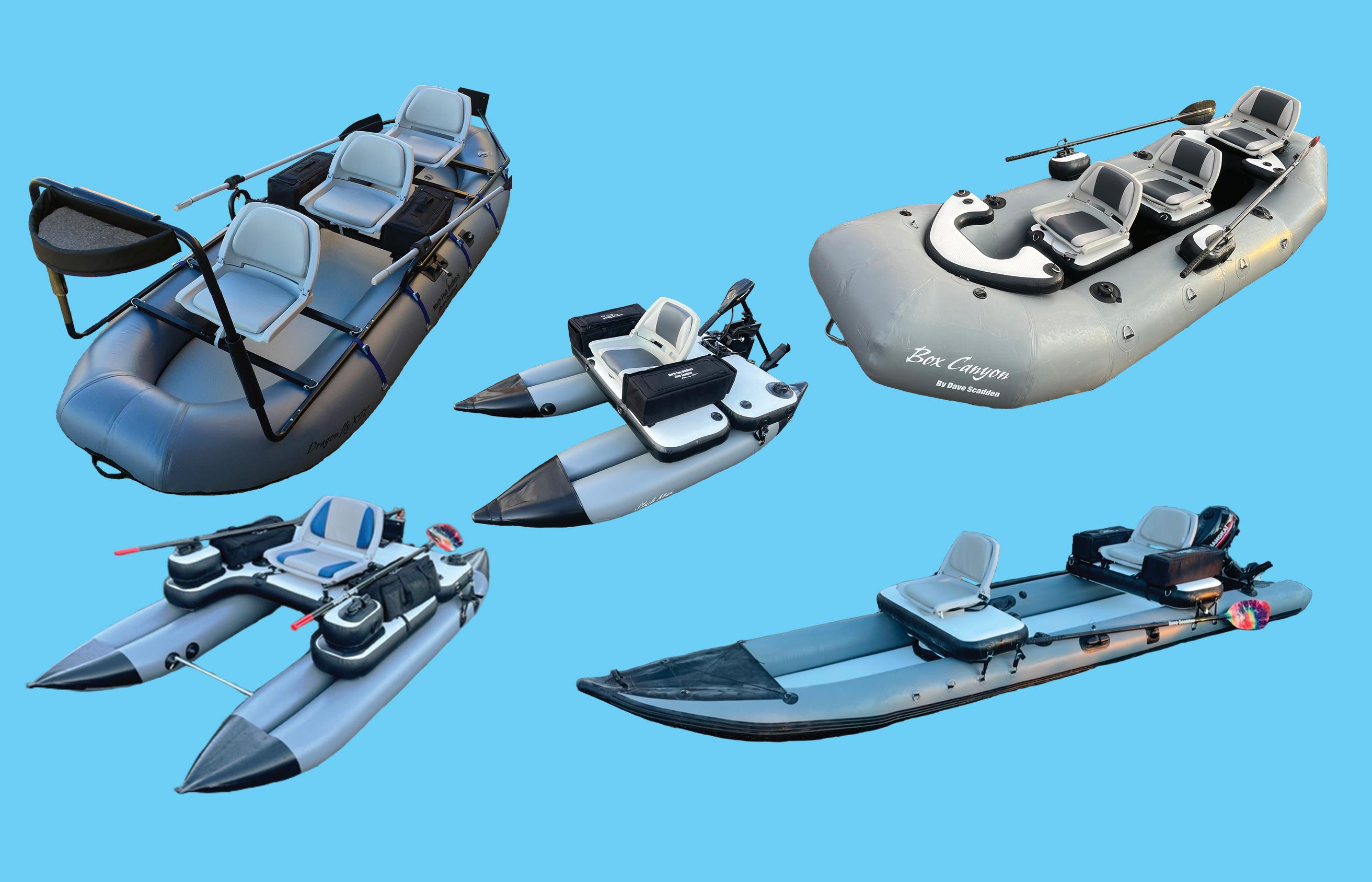










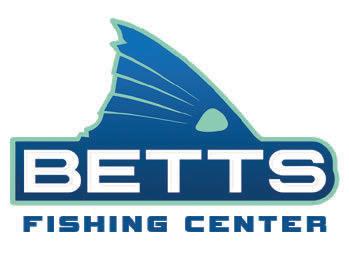


From February through April, bass ood the shallows to spawn, creating an exciting opportunity for anglers to catch monster !sh. While various techniques can be e ective, !shing with a big worm consistently tempts big, wary females. is method has proven successful nationwide, not just in the South.
Fishing a worm may not be the most thrilling technique, but it allows for a slow, precise presentation—ideal for enticing cautious bass. e key is patience and targeting highpercentage areas where these !sh are likely holding.
One e ective technique is casting a Texasrigged stick bait. Many anglers waste time on unproductive water, but focusing on isolated cover—small patches of grass, pads, wood, or rock structures—maximizes success. A 6” worm in darker colors like black-and-blue works well, paired with a 1/16 oz or 1/8 oz weight for a natural presentation. Given the thick cover, 17-20 lb uorocarbon is ideal for strength and stealth.
Another productive method is retrieving a big speed worm. is subtle, vibrating motion excites bass and helps locate !sh before slowing down for precision tactics. In stained water, darker shades like June bug work best, while

TYLER WOOLCOTT

green pumpkin with ake is ideal for clear water. A 1/8 oz to 1/4 oz weight with 15-17 lb uorocarbon balances presentation and control.
e wacky rig is highly e ective in shallow water, particularly for pressured bass. is weightless presentation targets isolated cover, making it a deadly !nesse option. A 10-15 lb uorocarbon leader on a spinning setup provides the necessary balance of stealth and strength. As with other worm techniques, darker colors suit stained water, while natural tones excel in clear conditions.
Flipping a worm is less stealthy but allows precise bait placement in thick cover, such as pad !elds, wood, or dense grass. is method is excellent for working through cover quickly while thoroughly breaking down key sections. Using large Senko-style baits and braided line ensures maximum strength. Weight selection varies from 3/8 oz to 3/4 oz, depending on cover density. Slowing down and targeting overlooked spots can set you apart from other anglers.
Rod and reel choices remain fairly consistent across these techniques. For casting and ipping, a 7’6” medium-heavy to heavy action rod, such as the 13 Fishing Omen Series, paired with a high-speed baitcasting reel like the Concept

A 7:5:1, ensures control and power. For wacky rigs, a 7’3” medium-heavy spinning rod with a quality reel like the 13 Fishing Axum provides sensitivity and strength.
ese big worm techniques have helped me land giants during the spawn, and I hope they do the same for you. Whether !shing Florida’s grass beds or rocky northern structures, these methods are time-tested and e ective. Get out there this spring and hook into some monster bass!
Tyler Woolcott is a professional tournament angler and guide. Check out his website at www.tylerwoolcott shing.com.
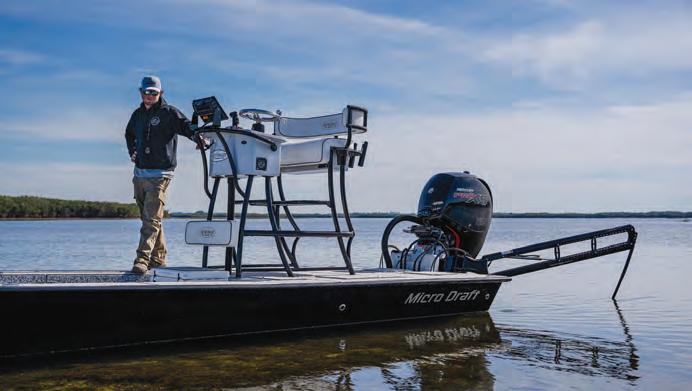






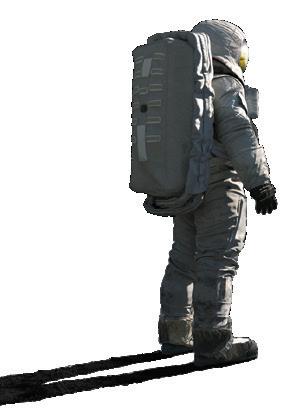



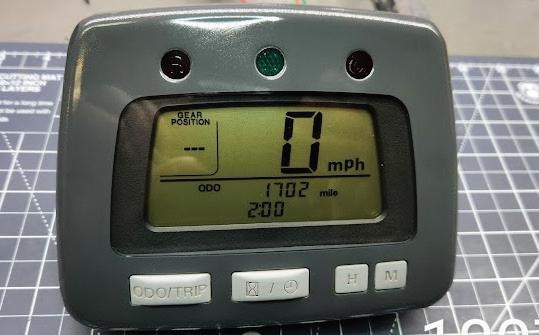









In the misty Scottish Highlands, where mountains meet shimmering lochs, the dirk dagger has been a symbol of heritage and honor for centuries. Originating in the medieval battles and clan rivalries, these daggers were not just weapons but treasured heirlooms passed through generations.
One stormy night, a young warrior named Ewan was called to the forge by his grandfather, Duncan, a revered blacksmith. “Ewan,” he began, “our clan’s strength lies not only in our courage but in the blades we wield. Tonight, you will learn the art of crafting a dirk that will carry our legacy forward.”
Ewan selected premium Damascus steel, layering it over 242 times to create a blade with intricate, swirling patterns reminiscent of ancient Highland rivers. Each fold whispered stories of battles won and lost, of honor and sacrifice. He crafted a classic spear point blade with a ¾ tang for enhanced strength and balance, ensuring it stood the test of time and combat.


The handle was crafted from solid Micarta, a material as resilient as the Scottish spirit. Adorned with stainless steel and brass file work, the spacers and guard shimmered like northern stars. The rounded pommel provided perfect balance and a textured grip, making it feel like an extension of Ewan’s hand.
As dawn broke, Ewan held the completed dirk in his hands. Measuring 12 inches overall, with a 7-inch blade, it was more than a weapon; it was a tribute to his ancestors and a beacon of his clan’s legacy.

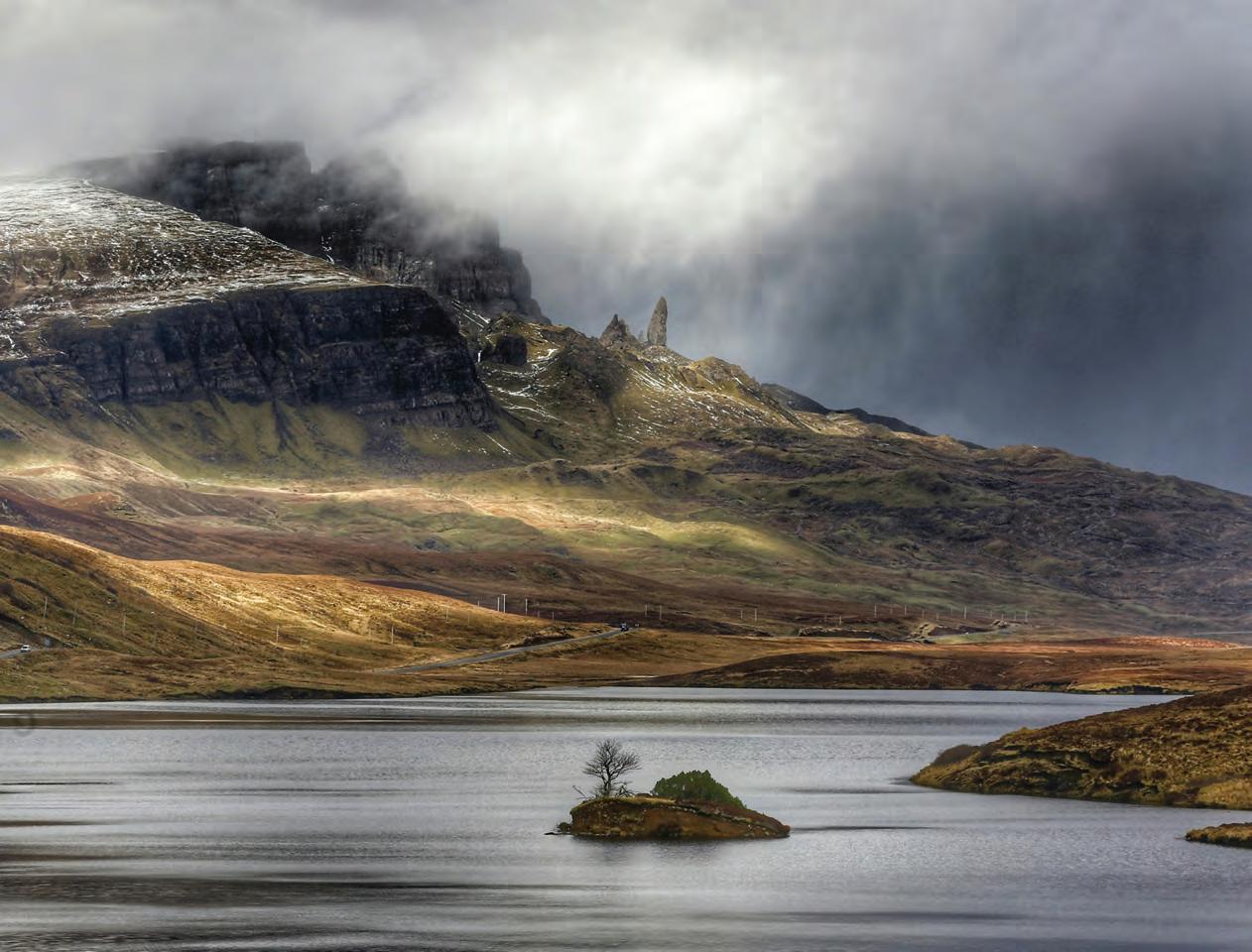
Ewan’s dirk became legendary, said to cut through the strongest armor, with patterns holding the essence of the Highlands. Today, the Damascus Spiral Dirk Knife stands as a pinnacle of craftsmanship, a modern marvel carrying the spirit of ancient Scottish warriors. It is a legacy reborn, ready to be part of your collection, where every inch tells a story of dedication, tradition, and excellence.
Embrace the legend. Hold the history. Own the Damascus Spiral Dirk Knife today for just $99 plus S&H when using special offer code CA5MDK at checkout. This offer is limited to the first 1,200 orders so be sharp and call up today!
Specifications:
Overall Length: 12”
Blade Length: 7”
Blade Material: Premium Damascus steel, layered over 242 times Tang: ¾ tang for enhanced performance
Handle Material: Solid Micarta with stainless steel and brass file, worked spacers and guard Pommel: Rounded for balance and ergonomic grip
Damascus Spiral Dirk Dagger Knife
Was - $249
Now Only - $99 (plus S&H)
Use o er code: CA5MDK
*California residents please call 1-800 733 8463 regarding Proposition 65 regulations before purchasing this product.





